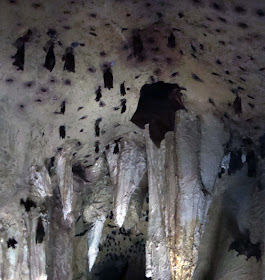The Art of Diorama: Museum of Natural History,
UPLB Laguna
A diorama is a miniature three-dimensional scene, for example, in a museum, in which models of figures are arranged against a background.
1. a miniature three-dimensional scene, in which models of figures are seen against a background
2. a picture made up of illuminated translucent curtains, viewed through an aperture
3. a museum display, as of an animal, of a specimen in its natural setting
4. cinema - a scene produced by the rearrangement of lighting effects Collins English Dictionary
2. a picture made up of illuminated translucent curtains, viewed through an aperture
3. a museum display, as of an animal, of a specimen in its natural setting
4. cinema - a scene produced by the rearrangement of lighting effects Collins English Dictionary
Photographed and Edited by Dr Abe V Rotor
Living with Nature School on Blog [avrotor.blogspot.com]
Philippine Eagle lords over the vast landscape atop Mt Apo, its home. Fewer and fewer sightings tell us the bird may soon join the list of extinct animals - if we don't protect its remaining population estimated to be less than a thousand
The idea of a diorama is likened to a showcase in a mall. It is an enclosure of glass, multi-dimensional so that the viewer enjoys a natural panoramic scenery - foreground and background, ground and ceiling, and a spacious center view for the main subject. From one side to the other, and back, the viewer finds freedom of vision to explore the whole diorama.
Natural history dioramas gain attention to naturalness. The stuff animals look real, a pond reveals the secret of its bottom. Water always looks fresh and invigorating. Trees and the whole vegetation retain their freshness. Depth of field leads the eye to the farthest point disappearing in thin air.
Emphasis is given to interaction of the living with the non-living world, the interrelationships of organisms in food chains and food webs, and by the flow of energy from one organism to another.
A diorama artist is multi-skilled: he is a sculptor, a painter and an architect. Above all, he is a scientist who understands the working of biology and ecology. He must be a naturalist, and being one, must uphold the philosophy of reverence for life that makes man the custodian of creation.
The Museum of Natural History is an educational center with a sprawling natural setting - Mt. Makiling, a tropical rainforest reached in three hours from Manila. It is a world-famous center of studies and researches in agriculture, environment and many related sciences, including humanities.
I recommend the place for a whole day educational field trip. An itinerary includes the Mt Makiling Botanical Garden, tour of UPLB campus (agriculture and forestry) and the International Rice Research Institute (IRRI). Special lectures and guided tours may be arranged. Packed lunch under the trees is a rare experience. Nature photography, is at its best - so with on-the-spot composition (drawing, musical sketch, poetry).
Happy field trip!
.
The Hornbill is another endangered Philippine bird. The first and last time I saw hornbills was in the seventies at the tip of Luzon along the treacherous Patapat road joining the Ilocos Region and Cagayan Valley. They are a closely knit family moving on the forest canopy. Their call is heard far and wide. It is resonated by their big hollow bills and echoed by big trees and cliffs.
Cave bats in a simulated habitat. Being nocturnal, the bats hunt from flying insects in the dark locating their prey through echolocation, the principle of the radar.Their droppings make a huge guano deposit mined for agriculture.
A rare rodent that lives on trees in Palawan, the last bastion of rare animal species, among them the porcupine, mouse deer and anteater.
Nesting pigeons keep vigil for intruders and predators. Masters of camouflage they blend with the surroundings and remain extremely quiet and still at the sign of danger. But when imminent, the mother bird stealthily dashes to another place and decoys away the attention of the enemy.
Instead of a diorama, the actual skeleton, and replica, of a whale are displayed for anatomical and morphological study. In the Smithsonian the blue whale, the biggest creature that ever lived on earth spans the length of a hall the size of a typical chapel.
Tree mushroom garden
A cluster of nature dioramas, each an ecosystem pristine and unspoiled.
Centennial celebration of UPLB, pictorials at the museum's lobby.
Author and wife are among the countless visitors.











No comments:
Post a Comment